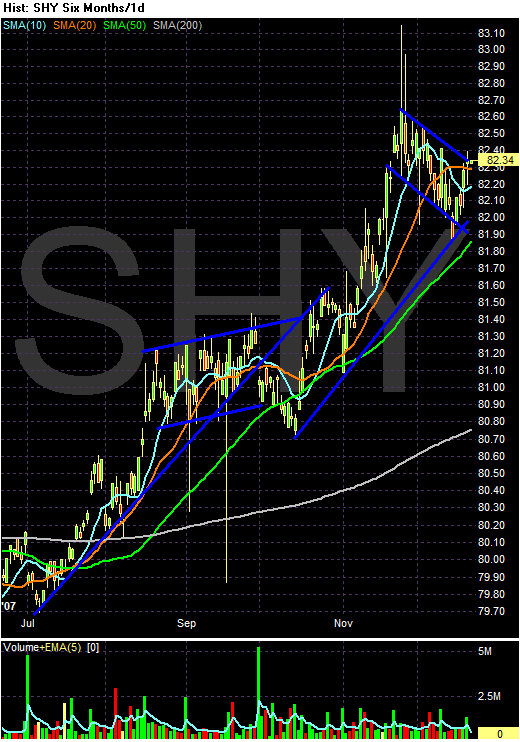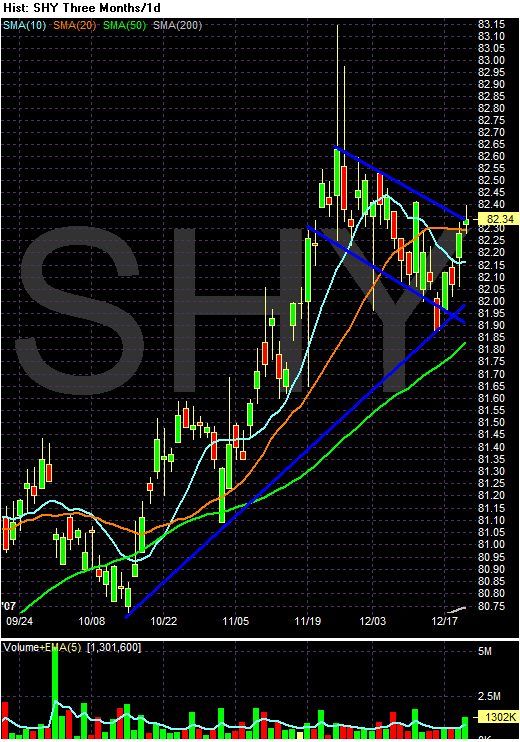
Over the last six months, this part of the Treasury curve has been in a clear bull market. The index rose from July through August, then consolidated for September. It sold off briefly at the beginning of September, but has rallied since.

On the three month chart notice the index is clearly in a bull market pennant/flag pattern and is on the verge of breaking out of this for another upward run
Unlike stocks which theoretically have unlimited upside potential, bonds are constrained by interest rates. There is also the issue of inflation, which lowers the value of fixed income payments. With inflation increasing it seems bond prices would be selling off right now. But the trouble in the mortgage and commercial paper market is providing bullish "safe haven" stimulus. And the bad news in the mortgage market is continuing. This week alone, we've had bad news from Morgan Stanley, Bear Stearns and now news today that Merrill Lynch may have further writedowns in their mortgage portfolio. And while the latest liquidity injection by the ECD and the Fed help, they haven't solved the problem:
The latest massive maneuvers by the Federal Reserve and European Central Bank have had the desired calming effect on money markets. But as those central banks acknowledge, the moves haven't eliminated the threat from a cascade of bad news from financial firms, worries about more bad news to come and the likely impact of falling U.S. housing prices.
The most visible indicator of persistent bank reluctance to lend to each other -- plus the reluctance of money-market mutual funds to lend to banks for more than a few days -- has been that banks are paying unusually high rates for short-term loans, compared with the target the Fed and ECB set for overnight loans.
The central banks have "alleviated a lot of the train-wreck fears about year-end," says Lou Crandall, chief economist at Wrightson ICAP, a New York bond-research firm. While the central banks' actions are temporary -- extending only through January -- "it buys us more time, which is the only thing that's going to resolve this."
So far, safe haven investment status has trumped inflation. There is also a thought moving around the markets that inflation is being stoked by supply problems in the commodities markets, thereby limiting the inflation is increasing argument which should be bearish for bonds.
So, we basically have a sentiment tug-of-war going on in the bond market. The bulls are relying on safe haven status while the bears are pointing in increasing inflation pressures. Who will win? Who the hell knows at this point.